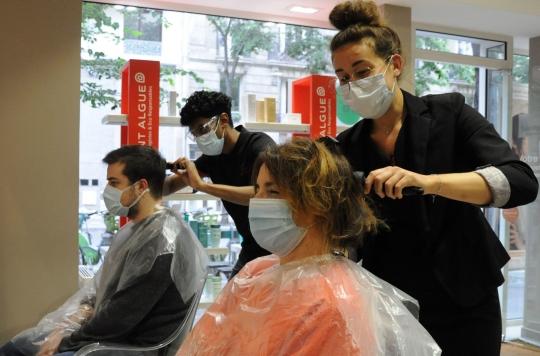According to a survey, in France, nearly 1 in 3 employees say they have been exposed to at least one chemical. There are over 84 million chemicals identified today.

What prevention policies for the use of chemicals at work? This is the theme of the World Day for Safety and Health at Work organized this Monday, April 28 by the International Labor Office (ILO) in collaboration with the National Research and Safety Institute (INRS). And the observation made by occupational health experts is far from reassuring.
According to the latest survey Sumer (1) published in 2010, in France nearly 1 in 3 employees declare having been exposed to at least one chemical product. There are over 84 million chemicals identified today. For his activities, man uses several tens of thousands of them and the combinations between these different substances are practically endless. “The World Day for Safety and Health at Work is an opportunity to shine the spotlight on this issue of risks associated with the use of chemicals”, confide the various players in this fourth edition.
All professional circles are affected
According to the 2014 ILO report published on that occasion, there is no reliable way to determine precisely the quantity of chemicals used or the number of workers exposed to these chemicals worldwide. Moreover, this specialized UN agency underlines that even if we immediately associate chemicals with industrial complexes (petrochemical refineries, construction sites, etc.), “all sectors and almost all workplaces have use of chemicals, and indeed many categories of workers are potentially at risk. Therefore, chemicals are a potential problem in all types of jobs. And although each particular case requires a response that varies according to the degree of exposure and the quantities of products handled, “no sector can fail to adopt an approach to the prevention and control of hazardous substances”, specifies the ILO.
In recent years, the Bureau reports that there has been growing concern about chemicals used in hair and nail salons (methyl methacrylate …). Many of these products are dangerous, in particular because they are used without adequate protective or preventive measures such as ventilation, protective equipment or training of personnel. In these places, consumers are also exposed, but these exposures are occasional and of short duration, unlike workers who are exposed to them daily and throughout the day.
In addition, even in offices, staff are exposed to particles of toner and the like, or may be assigned to print jobs or other operations that expose them more to chemicals. Finally, cleaning and maintenance staff in office buildings are also exposed to chemicals.
The consequences of exposure to chemicals for workers’ health
And the consequences of these exposures are far from trivial for human health. The acute effects of exposure to chemicals, such as poisoning or death after a single exposure, are well documented compared to those caused by minor and repeated exposures over time, due to the associated immediate symptoms. As a result, the lack of information on the consequences of exposure to chemicals (long-term and small doses) has long prevented the link between this type of exposure and cancer that breaks out 20 years later.
Finally, the cost of occupational diseases due to exposure to chemicals is considerable. The World Health Organization (WHO) released a note on the burden of disease attributable to chemicals worldwide in September 2012. The results of this work show that worldwide, 4.9 million deaths are directly attributable to environmental exposure and chemicals management each year.
(1) Like the previous ones (1987, 1994 and 2003), the Sumer 2010 survey was carried out by the Dares and the General Directorate of Labor (DGT) -Medical Labor Inspectorate. Designed using the same methodology as the 1994 and 2003 surveys, it measures changes in employee occupational exposure.
.

















